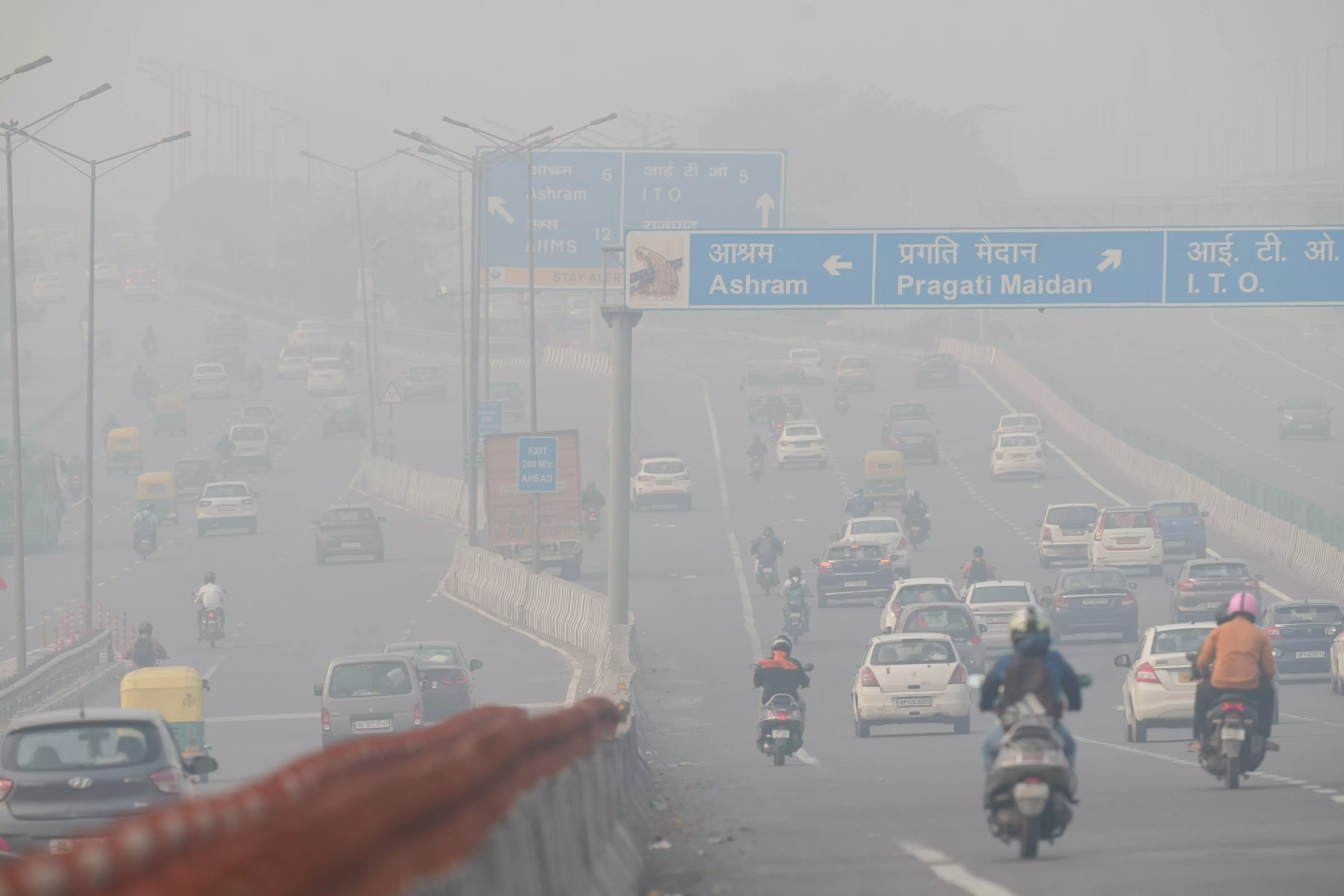
Vehicles move on a road amid low visibility due to smog, in New Delhi, Monday, November 13, 2023. Photo: PTI
Delhi air quality falls again after Diwali firecrackers nullify rain effects
The AQI at 7 am on Sunday (November 12) was at 202, the lowest AQI in Delhi on Diwali day for the past several years

Delhi recorded a jump in pollution levels and a smoky haze returned on Monday morning (November 13) after residents flouted the ban on firecrackers on Diwali night (November 12). The city recorded its best air quality on Diwali day in eight years on Sunday (November 12), with its 24-hour average Air Quality Index (AQI) standing at 218 at 4 pm. However, firecracker bursting till late Sunday night led to a spike in pollution levels amid low temperatures.
At 7 am on Monday (November 13), the AQI stood at 275 (poor category). Pollution levels even entered the very poor category in some areas, including Shadipur (315), Ayanagar (311), Lodhi Road (308), Pusa (355) and Jahangirpuri (333). The concentration of PM2.5, fine particulate matter that can penetrate deep into the respiratory system and trigger respiratory problems, exceeded the safe limit of 60 microgramme per cubic metre by six to seven times in these areas.
Firecracker bursting pushed the PM2.5 concentration at many places, including Okhla and Jahangirpuri, in the capital over 1,000 micrograms per cubic metre in the early morning hours.
Delhi recorded an AQI of 312 on Diwali last year, 382 in 2021, 414 in 2020, 337 in 2019, 281 in 2018, 319 in 2017 and 431 in 2016, according to Central Pollution Control Board data.
The city's AQI a day after Diwali stood at 360 in 2015; 445 in 2016; 403 in 2017; 390 in 2018; 368 in 2019; 435 in 2020, 462 in 2021 and 303 in 2022.
An AQI between zero and 50 is considered good, 51 and 100 satisfactory, 101 and 200 moderate, 201 and 300 poor, 301 and 400 very poor, 401 and 450 severe and above 450 severe plus.
Delhiites experienced clear skies and abundant sunshine on Saturday and Sunday as air quality improved sharply just ahead of Diwali this year. The improvement was attributed to intermittent rainfall on Friday and wind speeds favourable for the dispersion of pollutants.
However, the positive effects of the rain were nullified with the pollution generated by the bursting of firecrackers later on Sunday. Visuals on social media platforms showed people gathering in parks of localities to burst crackers after 4 pm.
In accordance with the practice of the past three years, Delhi had announced a comprehensive ban on the manufacture, storage, sale and the use of firecrackers within the city.
Speaking to PTI, the environmentalist Bhavreen Khandari said. “The Supreme Court’s firm stance on firecrackers got blown in the smoke of the firecrackers. Despite warnings and a complete ban, the implementing authorities have failed yet again. Wondering what stance will the Supreme Court take now? We are allowing our children to choke in the name of celebration.”
(With agency inputs)

